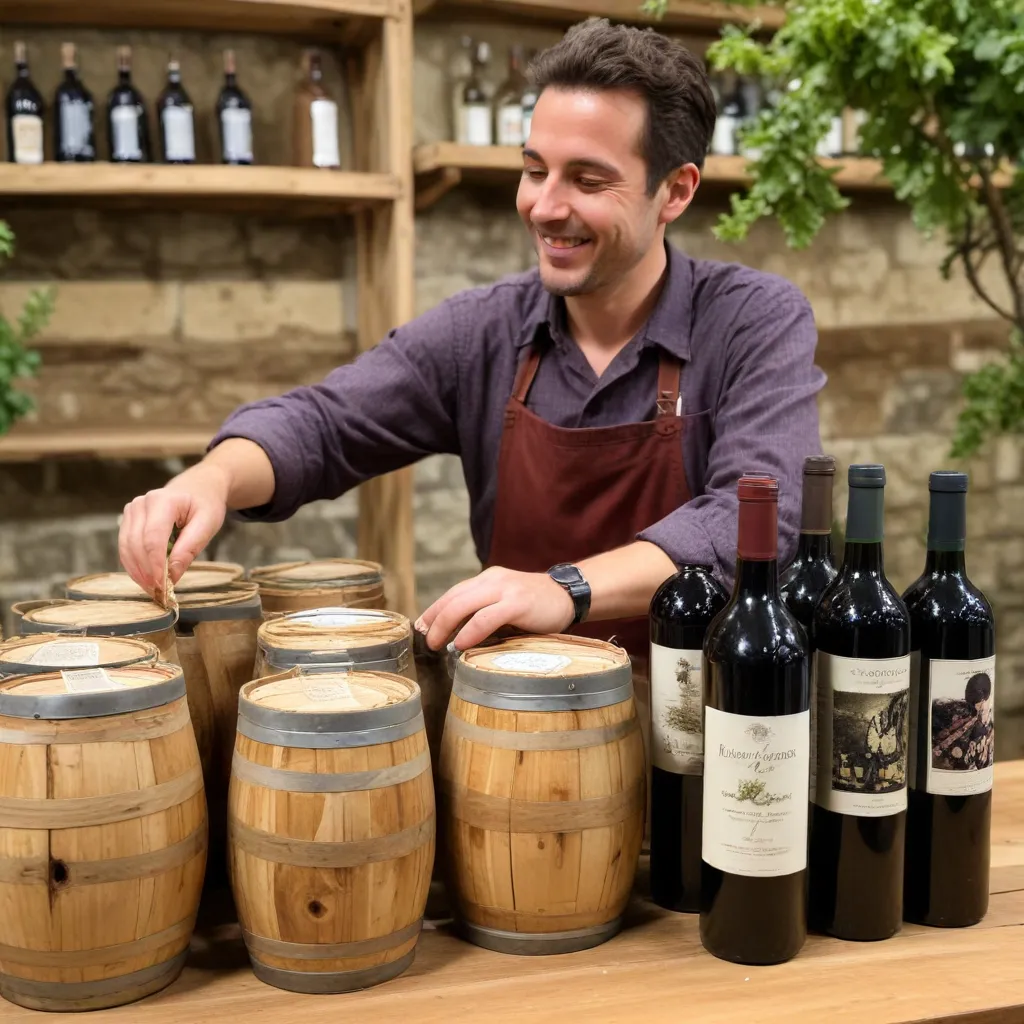
The journey of wine from grape to glass is often celebrated, but what about the lesser-known byproducts of winemaking? At the Wine Garden Inn, we believe these residual materials hold immense culinary potential, ripe for creative upcycling. Join us as we explore how to transform winemaking’s leftovers into delectable delights for the discerning palate.
The Winemaking Process
At the heart of any great wine lies a meticulous, time-honored process. Grape cultivation sets the stage, with skilled vintners tending to their vines with unwavering dedication. From pruning and canopy management to precise irrigation and nutrient balancing, each step lays the groundwork for a bountiful, flavorful harvest.
As the grapes reach optimal ripeness, the dance of fermentation and aging begins. Yeast transforms the grapes’ natural sugars into alcohol, while carefully controlled temperature, oxygen exposure, and barrel selection coax out the wine’s unique character. This intricate ballet results in the elixir we know and love.
Finally, the finished wine is bottled and distributed, ready to be shared and savored. But the winemaking process doesn’t end there – it’s what happens next that piques our culinary curiosity.
Winemaking Byproducts
When the grapes are pressed and the juice is fermented, there are several byproducts left behind. These materials, often seen as waste, hold untapped potential for the culinary connoisseur.
Grape pomace, the skins, seeds, and stems left after pressing, is a rich source of antioxidants, dietary fiber, and even oil. Lees, the sediment that settles out during fermentation and aging, contain valuable yeast and protein compounds.
And then there’s wine vinegar – the often-overlooked result of wine’s natural oxidation. Far from waste, these byproducts can be transformed into a symphony of flavors and textures.
Upcycling Winemaking Byproducts
At the Wine Garden Inn, we’re on a mission to showcase the versatility of these winemaking leftovers. By embracing sustainable practices and tapping into the creative potential of our culinary team, we’re upcycling these byproducts in innovative ways.
Culinary Applications
Grape pomace, for example, can be repurposed into nutrient-dense flours, oils, and even natural food colorants. Our pastry chef has experimented with incorporating pomace into everything from crisp crackers to decadent cakes, bringing a unique, wine-inspired twist to our menu.
Lees, rich in mannoproteins and polysaccharides, can be transformed into savory broths, silky sauces, and even a vegan cheese alternative. The intense umami notes they lend pair beautifully with our estate-grown produce and locally sourced proteins.
And wine vinegar? It’s the foundation of some of our most flavorful dressings, marinades, and pickling brines, amplifying the natural sweetness of our garden-fresh harvests.
Sustainable Practices
By embracing these winemaking byproducts, we’re not only elevating our culinary offerings – we’re also championing sustainability. Diverting these materials from landfills and finding innovative ways to reuse them aligns with our core values at the Wine Garden Inn.
Our composting program transforms grape pomace and lees into rich, nutrient-dense soil amendments, nurturing the very vines that started this cycle. And our on-site vinegar production facility repurposes wine that would otherwise go to waste, creating a truly closed-loop system.
Product Development
But the culinary potential of winemaking byproducts extends beyond our own kitchen. We’ve partnered with local artisans to develop unique products that showcase these ingredients in all their glory.
From grape seed oil and pomace-based flours to probiotic-rich vinegar shrubs, these collaborations celebrate the terroir of our region and the ingenuity of our community. By sharing these innovations with our guests, we’re inspiring them to explore the world of winemaking byproducts in their own kitchens.
The Culinary Connoisseur
As wine lovers and food enthusiasts, we at the Wine Garden Inn understand the profound synergy between the two. By upcycling winemaking byproducts, we’re not only reducing waste – we’re elevating the flavor profiles and pairing potential of our culinary offerings.
Flavor Profiles
The earthy, tannic notes of grape pomace lend themselves beautifully to savory dishes, adding complexity and depth to everything from roasted vegetables to hearty stews. Lees, with their creamy mouthfeel and umami punch, can transform a simple pasta or risotto into a symphony of textures and tastes.
And wine vinegar? Its bright acidity and subtle fruit undertones make it a versatile ingredient, balancing rich proteins, brightening salads, and even elevating cocktails and mocktails.
Pairing Recommendations
When it comes to wine and food pairing, these byproducts are a game-changer. A grape seed oil-based vinaigrette can breathe new life into a salad meant to be enjoyed alongside a crisp, mineral-driven Vermentino. Lees-thickened sauces pair beautifully with the bold tannins of a Cabernet Sauvignon or the elegance of a Pinot Noir.
And for those seeking a non-alcoholic pairing, our house-made wine vinegars are a revelation. Their complex, layered flavors can stand up to rich, savory dishes or provide a refreshing counterpoint to sweet desserts.
Mixology Trends
The culinary potential of winemaking byproducts extends even to the bar. Our talented mixologists have been experimenting with wine vinegars, grape seed oils, and even dehydrated grape skins to craft innovative, wine-inspired cocktails and zero-proof libations.
From a luscious grape seed-infused gin and tonic to a sophisticated sherry-vinegar shrub mocktail, these creations showcase the versatility of these often-overlooked materials. By integrating them into our cocktail program, we’re offering our guests a truly holistic wine country experience.
At the Wine Garden Inn, we believe that the journey of wine extends far beyond the glass. By embracing the culinary potential of winemaking byproducts, we’re not only reducing waste and championing sustainability – we’re elevating the entire wine country experience. Join us as we explore the delicious and innovative world that lies between the vine and the vinegar.
